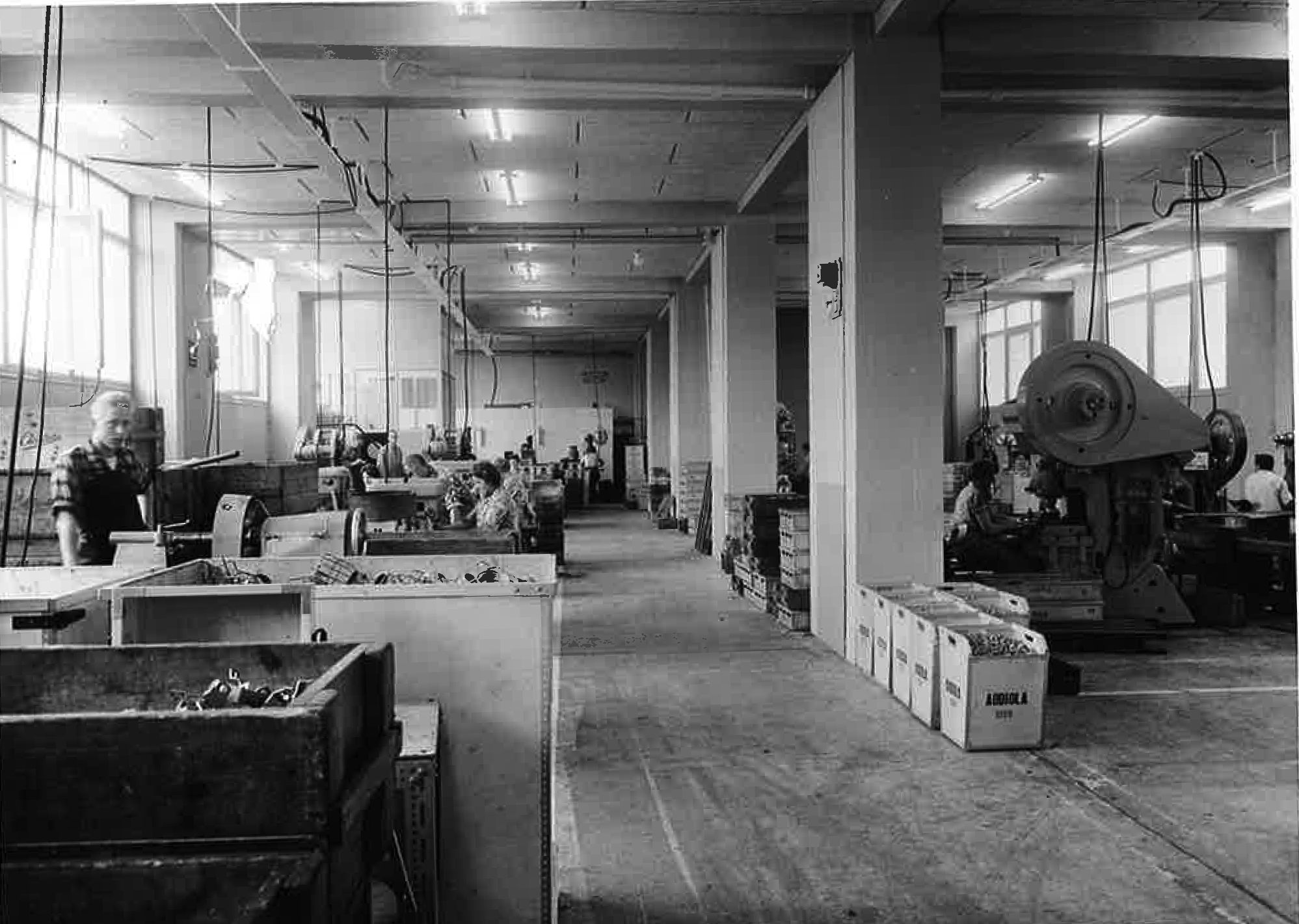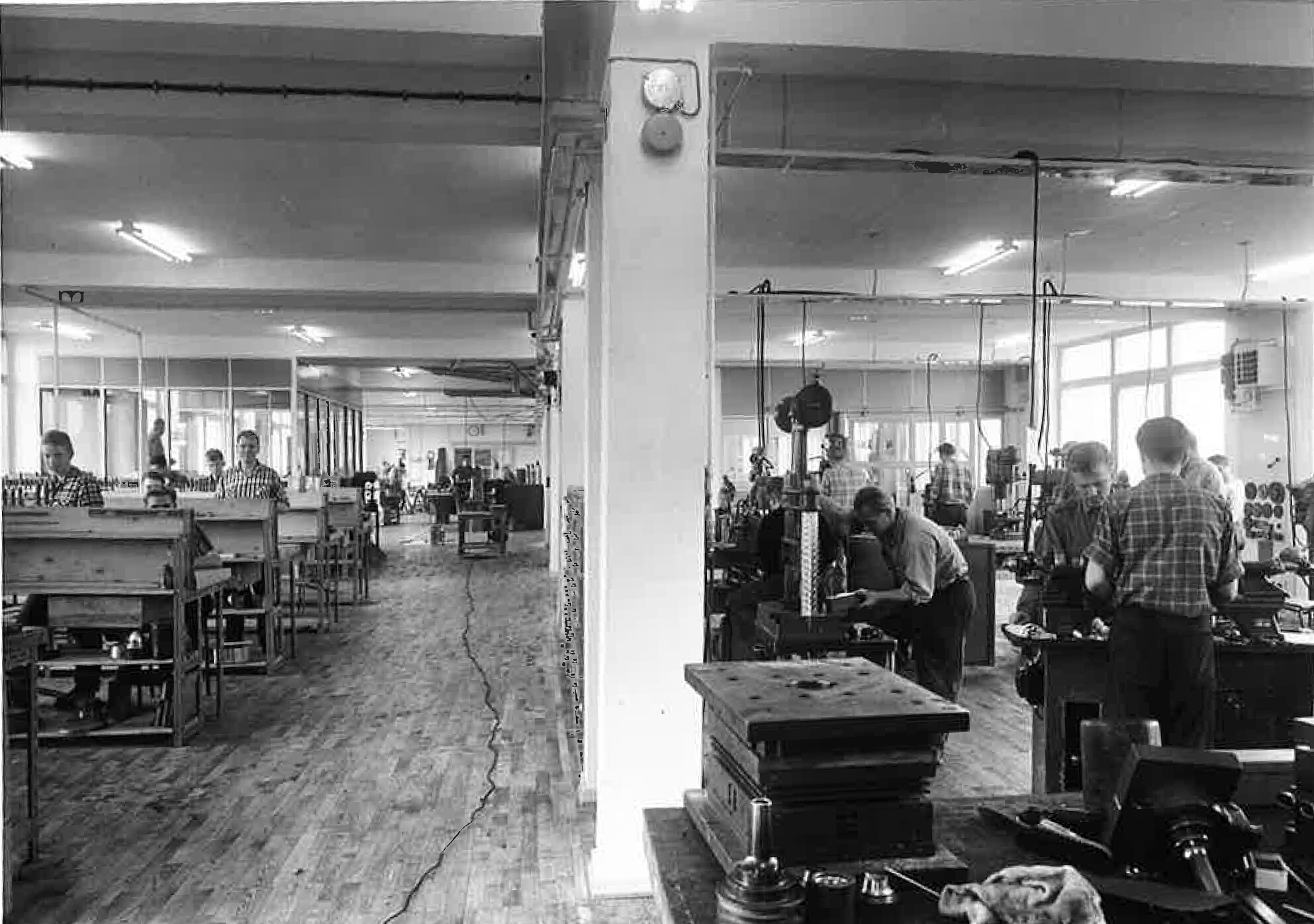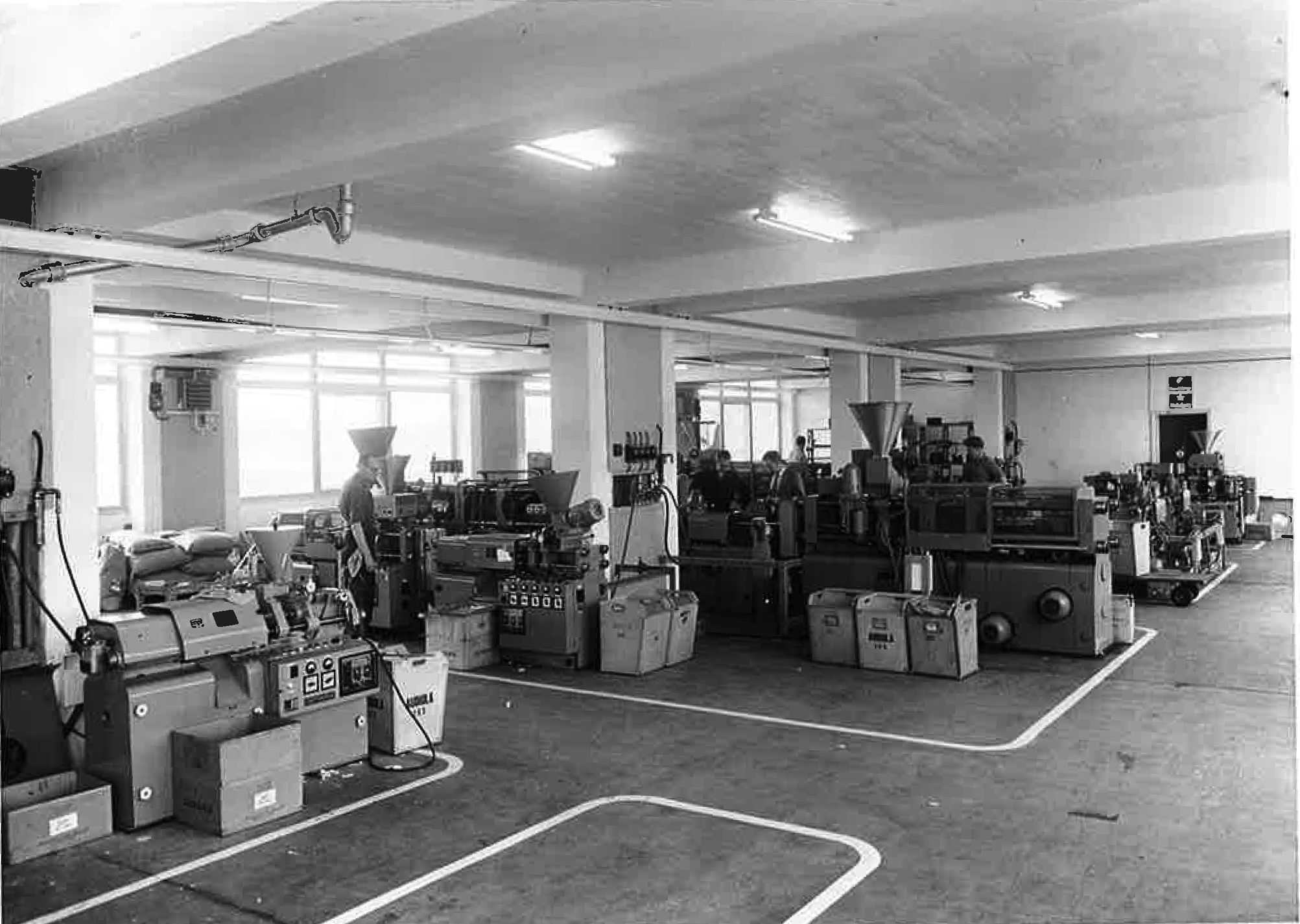Audiola becomes a conglomerate
At Audiola in Kolding, they want more than just to produce radios and gramophones. The company which is a subsidiary of Nordisk Solar Compagni, is on the hunt for new business territories.
CEO Jacob Jørgensen believes that way too many people have trouble navigating the unknown. The challenges of the interwar period and the crisis in the 30s have taught him that a successful company does not happen on its own. They take foresight, courage, willpower, being resourceful and having the ability to think outside the box and act upon it.
Just like when World War I paralysed the import and the electricity meter sales, Jacob Jørgensen now fears that history is repeating itself. The war and the tough rationing and blockade of raw materials of the occupation quickly limit Audiola’s production of radios. This time, it is not a shortage of electricity meters but a scarcity of vacuum tubes that threatens to curb Solar’s development.
He realises the severity of the situation and knows that there is a lot more at stake this time. Now, it’s not just the development of the business in Denmark that might be impaired. It might also cost Solar’s initial hold on the newly entered export markets.
If Audiola does not manage to seek out new opportunities and change their game, it will be impossible to maintain a profitable production and 200 jobs might vanish into thin air.
How production is maintained
Therefore, already during the first years of the war, Jacob Jørgensen lets Audiola initiate the switch so that they can both maintain the radio production while also experimenting on developing new products. In order to keep the engine running, Audiola must also try to become subcontractor for some of the Danish industrial companies, since they have lost their suppliers due to the war.
Audiola starts manufacturing different electrical articles and items made from bakelite, which is one of the earliest types of plastic. Because of its non-conductivity and heat resistance, the material was often used for radio and telephone casings. In 1942, the factory is the subcontractor of punched out chassis for Telefunken in Copenhagen. The switch catches on and they invest in their own galvanising department, buy the needed machinery and despite the downsized radio production, Audiola is soon busy with another production. The plan is a success!
However, as a consequence of the expanding production, they soon run out of space and the plant becomes too small.
The Board decides to expand the factory with an extra wing and as they acquire a local machine shop, Jacob Jørgensen succeeds in procuring the extra needed capacity, despite the war.
In the post war period, Audiola’s growth explodes
After the war, the factory changes a lot. The plant is modernised and expands as Audiola develops new products. However, the factory can no longer expand in the backyard. There’s no room. Instead, they add two extra floors to the building. In the bakelite section, we now find modern presses, which are some of the biggest in the country. They stand side by side and a three-shift system is implemented to keep up with the demand.
And things move along quickly. Everywhere there’s a shortage of the many electrical articles and bakelite products that Audiola produces. On top of record sales in their home market, in only a few years, Solar builds up a sensational million export.

Photo from the galvanising section of the factory
From the backyard to the factory yard
By the end of the 50s, Audiola is one of the biggest workplaces in Kolding. The production increases and it is clear that it is no longer possible for Audiola to expand further in the backyard at Haderslevvej.
Therefore, in 1958, Jacob Jørgensen buys a discontinued railroad area off Kolding municipality with the intention of erecting an industrial building which can accommodate Audiola’s tools department and Dansk Målerværksted. Furthermore, it should function as a modern incubator for entrepreneurship and establishing new companies.
Jacob Jørgensen initiates the building project costing millions. Approx. 1½ year later, “Fabriksgården” (the factory yard) is finished. The frontage of the building is 100 metres long and 14 metres tall. The building totals 8,200 square metres, which means that Audiola ends up expanding with more than 200 percent.
In the old factory buildings at Haderslevvej, the remaining job functions are improved. Logistics and work processes are optimised and they do a minor renovation. They set up a soundproof workshop for the biggest presses, which produce the largest items. Among other things, Audiola produces bakelite toilet seats, which by the standards of the time, were pretty revolutionary and classy.
Within a few years, Audiola becomes the biggest employer in the area with close to 600 employees at “Fabriksgården” (the factory yard). Furthermore, the company is now a famous and respected subcontractor of several significant industrial companies in Denmark, Germany and The Netherlands, including Danfoss, Velux, LK-NES, Lego, Robert Bosch, Siemens and Philips.
The backyard
The cramped space of Audiola leads to an expansion in the backyard at Haderslevvej. This video shows us how the many women worked in the production, and how the company excavated for the basement before erecting yet another building in the backyard.
"The factory yard"
This video shows the construction of the building named "Fabriksgården". We get to see everything from the construction site, the topping-out ceremony on the top floor to the difficult task of moving all the machinery and equipment to the right floor.
After Second World War
After First World War, unemployment increased significantly. As Second World War breaks loose, the situation does not improve as rationing and embargoes on import are introduced.
Through the 30s, there was an immense unemployment. Approximately every third worker has been without work during the worst months in the winter of 1939. The spring of 1940 was supposed to bring on better times, but instead comes the occupation. The changed situation regarding raw materials and fuel quickly proves quite significant to many companies. Adding to this, comes the blackouts which also reduces working hours.
While the First World War was followed by a period of financial crisis, the years after Second World War turns out quite different. The initial 5 to 10 years after the war are tough, but hereon after, Western Europe experiences an unprecedented economic boom during the 50s and 60s.
By the end of the 1950s, we see a significant economic growth in Europe. Also in Denmark. The financial crisis from the first decade after the war is succeeded by an economic boom from approx. 1957. Employment is about 100%, production is thriving and in general, we see a high materialistic living standard. Little by little, Denmark ends up exporting more industrial products than agricultural goods. Denmark has become an industrial society.
CV – Jacob Jørgensen
Kolding 1962
Personal data:
Name: Jacob Lauritz Jørgensen
Date of birth: Born 17 January 1891, Danish citizen
Place of birth: Sønderborg, which at the time belonged under Germany
Civil status: Married in 1918 to Marie Andersen, Vamdrup
Children: Harald Preben Jørgensen (06.01.1918) and Edith Jørgensen (20.01.1920)
Address: Strandvejen 9 in Kolding
Education and professional experience:
1905 – 1906: Ship’s boy at the German school ship Potosi
1906 – 1909: Trains to be a ship constructing architect at shipyards in Flensburg and Eutin, Germany
1909 – 1910: Employed with Blom & Vos, Hamburg, and a power station in Hamburg
1910 – 1912: Employed as a sales representative and metrology expert with Solar Zähler Werke, Hamburg
01.02.1912: Immigrates to Denmark and represents the English company Solar Works
21.07.1913: Founder and manager of Solar Elektricitetsmaaleren v/ Pedersen & Jørgensen
17.05.1919: Founder and day-to-day manager of Nordisk Solar Compagni, Jernbanegade 19, Kolding
1919 - 1920: Receives trade licenses as merchant and manufacturer in Kolding
01.12.1924: Establishes the company Dansk Målerværksted, Kolding
1926 - 1928: Chairman of the business network Kolding Fodsportsforening af 1915
1927 - 1946: Honorary Consul to Germany in Kolding
1929 - 1933: Member of the board of Kolding Sejlklub (yacht club)
1930: Managing Director of Aktieselskabet Nordisk Solar Compagni, Kolding
1931 - 1946: Managing Director and Chairman of the board of Scandinavian Incandescent Lamp Factory in Kolding
1934 - 1938: Chairman of the board of A/S Kolding Ridehus (riding hall) at Dyrhavevej in Kolding
1938: Managing Director of Audiola Radio, Kolding
1960: Managing Director of Jacob L Jørgensen Holding Co
1961: Founder and owner of the shipping company Jørg Line
Personal interests and qualifications:
Interests: Family, horses and riding, ships and yachting
Languages: Masters Danish (with an accent), German and English in writing and speech
Merchant: Has a distinct sense for great business acumen, is innovative and an initiator


